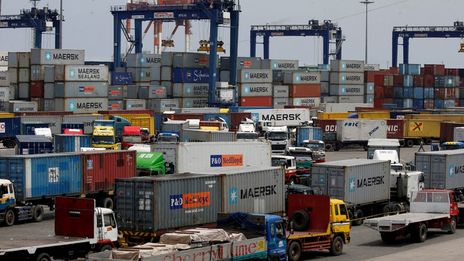,
With prices on an upward trend and fundamentals improving, there are reasons to believe that 2017 will be a real turning point for fertilizer prices. Global fertilizer prices fell in each of the last two years, with prices in 2014 pretty much flat (i.e. a little higher for some and a little lower for others). However, futures contracts suggest that urea prices will be as much as 20 percent higher year-on-year in 2017.
Urea prices started to improve towards the end of 2016 and have continued to climb higher in the early stages of 2017. They are now up by almost 50 percent since reaching multi-year lows in July 2016. In additions the futures curve points to further improvements in the coming months. March 2017 urea FOB NOLA futures prices are currently 7 percent higher than front month prices and calendar 2017 prices are 19 percent higher than the 2016 average of urea FOB NOLA prices. The main factors contributing to the better outlook for fertilizer prices are declining exports from China, increasing input costs and stable to slightly higher demand.
Chinese Urea Exports Lower Year-on-Year in 2016
The biggest boost for urea prices towards the end of 2016 was the drop in supply from China due to the erosion of producer margins. Exporting urea was unprofitable for Chinese producers for most of 2016 as a result of low fertilizer prices and rising coal (the major input for Chinese urea) prices. According to China Customs data, Chinese urea exports fell by 32 percent year-on-year to 8.1 million tonnes in the first eleven months of 2016. With monthly exports on a downward trend for most of 2016, it's likely that the year-on-year drop will be even more severe once full year data is available. Chinese urea exports were down 77 percent year-on-year in November 2016 at just 335,000 tonnes.
In a bid to help struggling fertilizer producers, the Chinese government has rescinded its export tax on urea and DAP, as well as a number of other nutrients. The scrapping of the approximate $12 per tonne export tax on urea and $15 per tonne export tax on DAP is likely to at least slow down the fall in Chinese fertiliser exports. The change came into effect on January 1. Combined with the fact that Chinese coal prices have fallen by 15 percent since November, this could help reverse the trend of falling Chinese exports if urea prices continue to rise. As such, it will be important to monitor these developments throughout 2017.
Natural Gas Prices Continue to Rise
The outlook for natural gas in 2017 and beyond has also improved, with market participants confident that the industry has passed the low-point in the cycle. Since Natural gas is used as the main feedstock for urea production, natural gas and urea prices are highly correlated. In 2016, U.S. natural gas prices responded to a significant rebalancing between supply and demand and it is now expected that demand growth should at least match supply in the next couple of years.
ICE Henry Hub natural gas benchmark prices are now more than twice what they were when they bottomed in March 2016. Production has been quick to respond to the higher prices. According to data from Baker Hughes Incorporated, the U.S. natural gas rig count is up by 68 percent from its low at the end of August 2016. Even with supply responding to more favourable prices, it's unlikely that they will ramp up production fast enough to undo all of the gains. However, smaller price drops are likely at times due to seasonal demand factors.
Robust Demand from Corn Planting
On the demand side, growth is likely to come from the U.S, where farmers have to some extent neglected fertilizer use recently in order to cut costs. Although corn remains majorly oversupplied as a result of record high yields in the 2015/16 crop year, farmers in the U.S continue to favour corn planting to soybeans. This will mean demand growth for urea in 2017, especially since farmers will need to increase fertilizer use to keep yield high. U.S. corn planted acreage is expected to increase by 6.8 percent year-on-year to 94 million acres in the 2016/17 crop year, according to the latest United States Department of Agriculture (USDA) World Agriculture Supply and Demand Estimates (WASDE) report. This would make the 2016/17 crop year the third highest year on record for U.S. corn planted acreage.
DISCLAIMER: The contents of this report provide only general information on certain investment products. CLTX does not provide, and the provision of such information must not be construed as CLTX providing, financial advice or recommendation for any investment product. The contents should not be taken in any way as an inducement to trade or a solicitation for orders or entry into any legal relations, nor taken as intended in any way to prompt any action or decision on your part whether to undertake or consider undertaking any investment decision or otherwise.
Cleartrade Exchange Pte Ltd. published this content on 19 January 2017 and is solely responsible for the information contained herein.
Distributed by Public, unedited and unaltered, on 19 January 2017 10:06:05 UTC.
Original documenthttp://www.cltx.com/2017-a-turning-point-for-fertilizer-prices/
Public permalinkhttp://www.publicnow.com/view/839E997BA3C21CAF5ABE9F21FF97D1E848E5A111


























